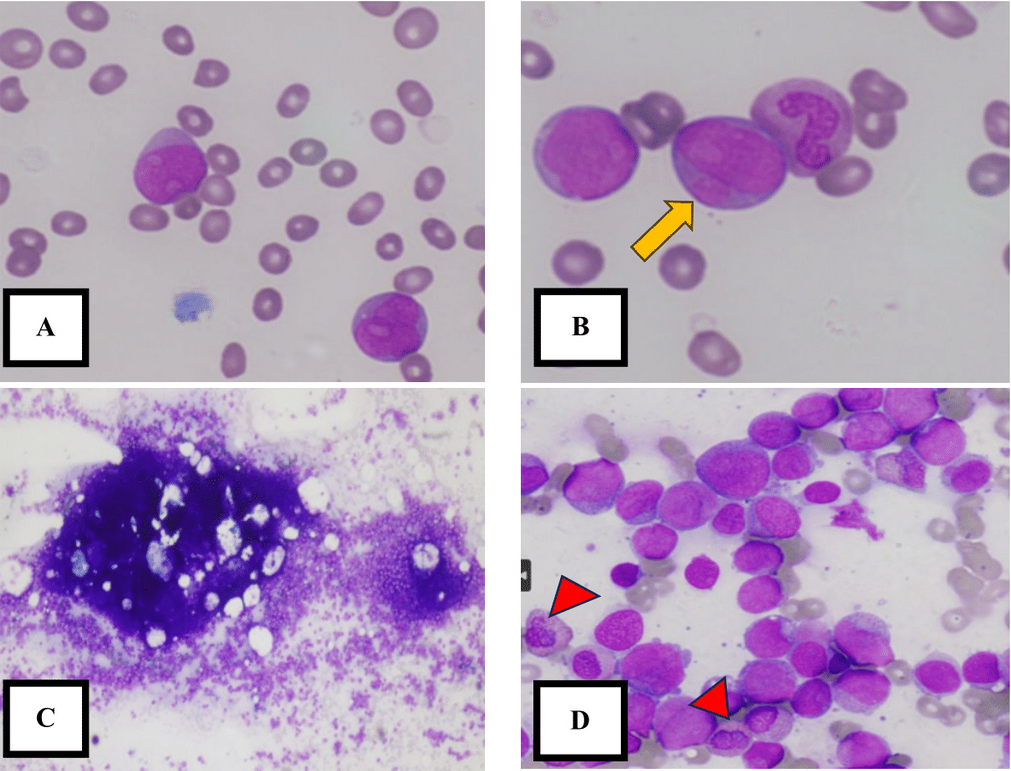Acute Myeloid Leukemia with 8:21 Translocation and Aberrant B-Marker Expression
DOI:
https://doi.org/10.15419/bmrat.v10i8.822Keywords:
AML, t(8, translocation, B-marker, CD19, CD79a, PAX 5, X-chromosomeAbstract
Background: Acute myeloid leukemia (AML) with t(8;21)(q22;q22) is a frequently encountered subtype of AML with recurrent genetic abnormalities, found in approximately 1?5% of AML cases. Here, we present cases of AML with t(8;21) in elderly patients with aberrant B-marker expression identified at our institution, including their clinical outcomes when treated with hypomethylating agents and BCL-2 inhibitors.
Case presentation: A 60-year-old patient diagnosed with AML carried the t(8;21) chromosomal translocation. Immunophenotyping and immunohistochemistry revealed aberrant expression of B-markers, including CD19, CD79a, and PAX5. Cytogenetic analysis also identified a loss of the X chromosome, a common cytogenetic aberration in AML associated with t(8;21). Due to the patient's age and inability to tolerate intensive chemotherapy, treatment was initiated using a hypomethylating agent and a BCL-2 inhibitor. Although the initial bone marrow evaluation showed an excess of blast cells, subsequent assessments demonstrated a favorable response to the treatment, with the absence of blast cells and improvements in peripheral blood parameters.
Conclusion: The presence of B-marker expression in AML with t(8;21) is a relatively common occurrence. The integration of cytogenetic and molecular investigations plays a vital role in accurately diagnosing and classifying AML. A remarkable feature of AML with t(8;21) is its high remission rate, and this holds true even in cases where standard intensive chemotherapy is not utilized. Moreover, the detection of aberrant B-marker expression, particularly CD19, signifies a favorable prognosis.

Published
Issue
Section
License
Copyright The Author(s) 2017. This article is published with open access by BioMedPress. This article is distributed under the terms of the Creative Commons Attribution License (CC-BY 4.0) which permits any use, distribution, and reproduction in any medium, provided the original author(s) and the source are credited.
